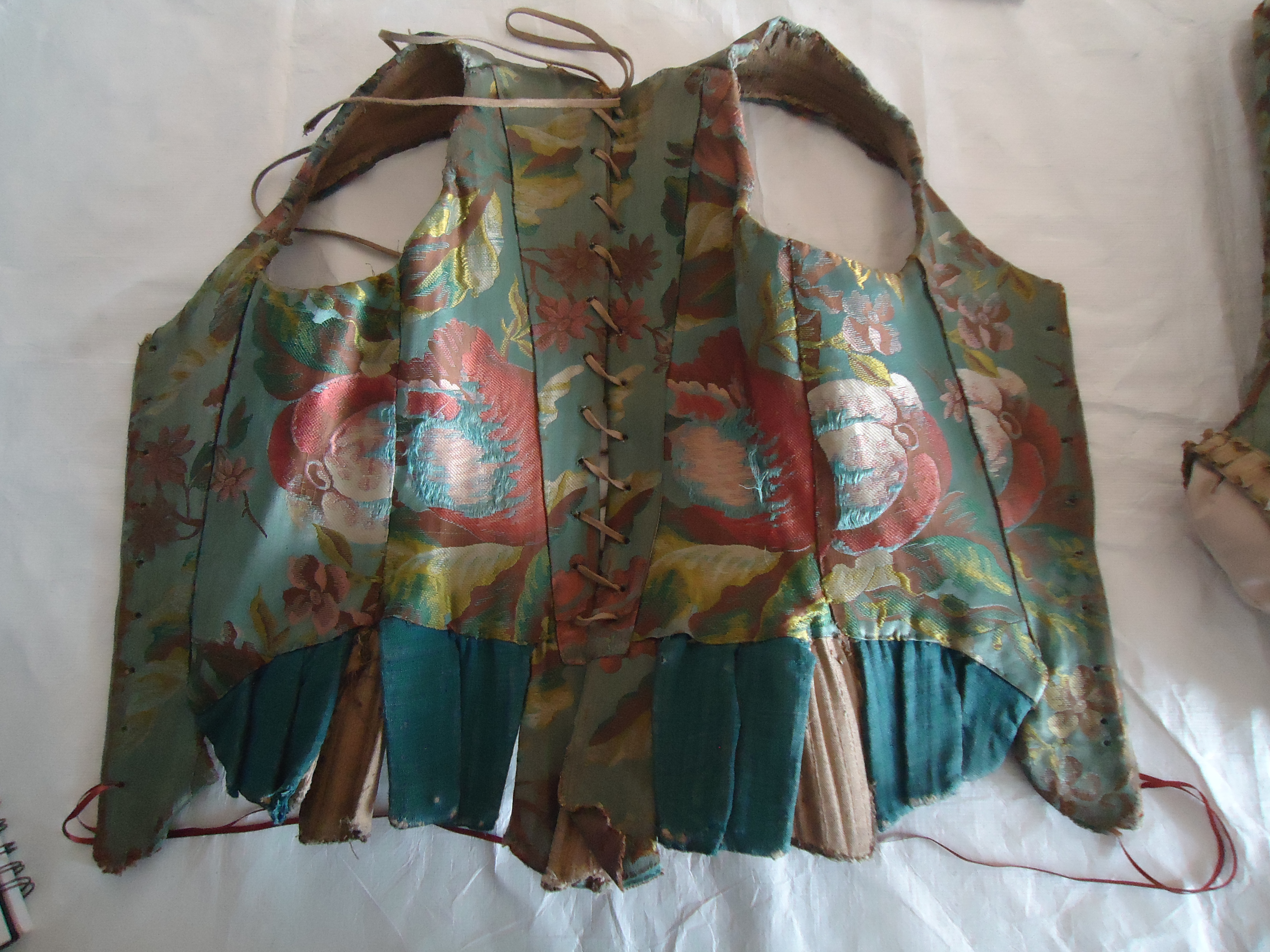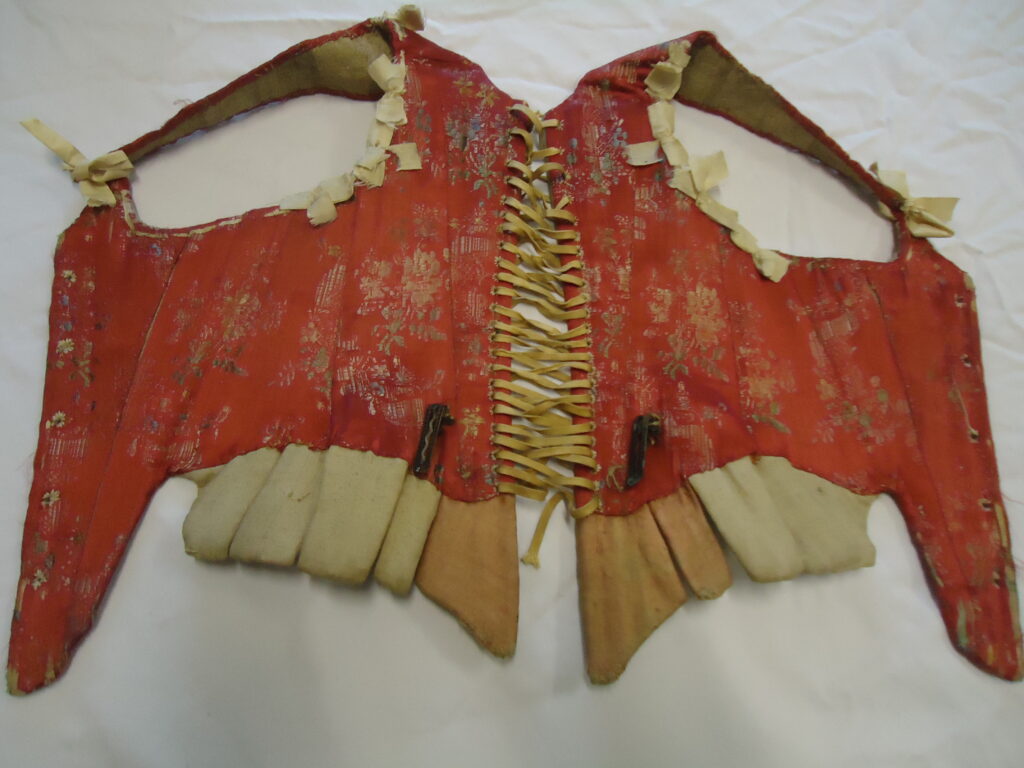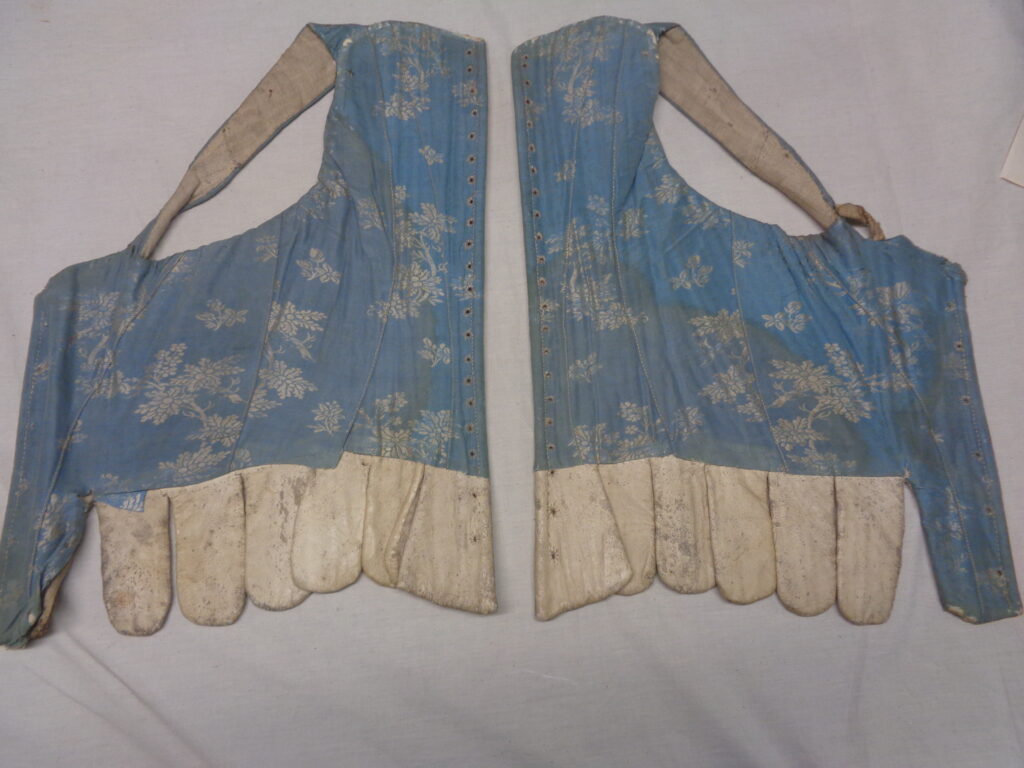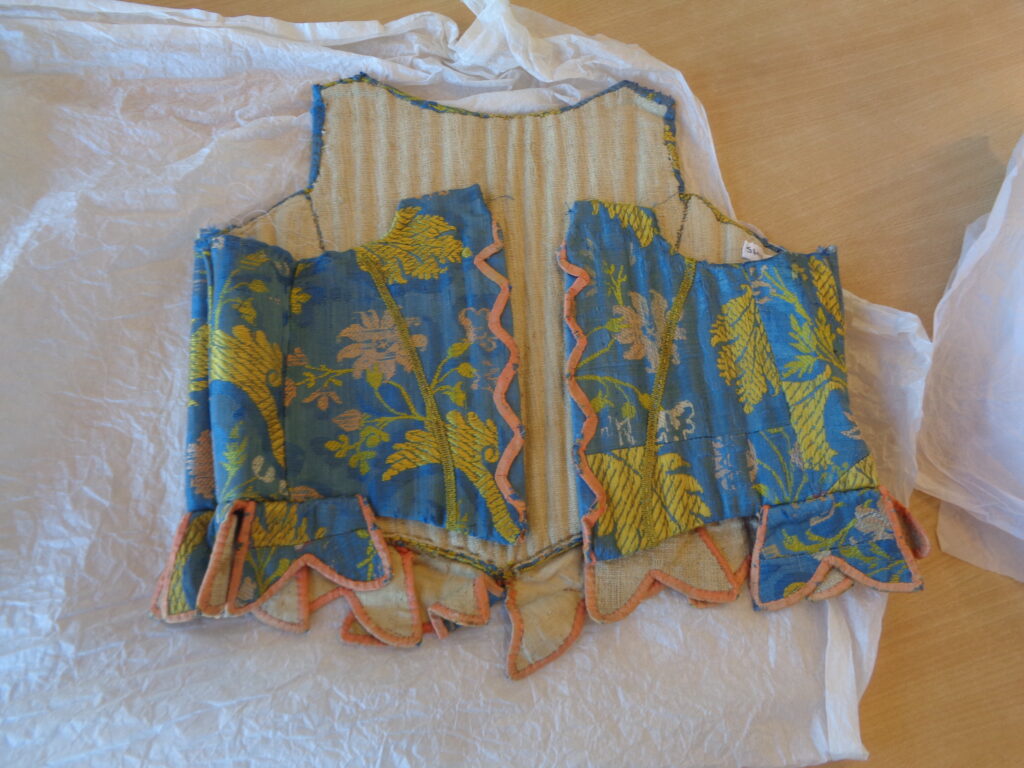Covered Stays:
Now for starters we want to defend the right to call this type of garment ‘Stays’. I’ve wondered since reading Lynne Sorge-English’s ‘Stays and Body Image in London’ if these were in fact ‘bodices’. In the sources found by Sorge-English these ‘bodices’ were ready made items and this type of stays here has got to be one of the simplest sort of stays to make. There is NO inner boning to them. All the ones I’ve studied have been unlined with the backing layer to the bones being the final inside layer. The stitching is MUCH more relaxed than what is found on normal stays. The boning channels were broader and had a looser feel. The tabs were broader too so a lot less work in that area. AND they rarely featured any complicated shaping. These things can be laid flat on the table, folded in half along the lacing, and are generally a much floppier, looser type of garment. So were/are these bodices? Truth is who knows but I’m using the term ‘stays’ here as Pattern of Fashion 5 uses a quote from Monsieur Reisser in 1770 ‘In our art we distinguish two sorts of stays, stitched stays and covered stays’. Whether or not they are a type of covered stays that blended into the term ‘bodice’, either way they are undoubtedly ‘Covered’.
That having been dealt with, we’d now like to show 3 of the Covered Stays that we have studied at 2 museums. Please treat these images with respect – they are generously given and all credit and thanks goes to these museums for letting us use the images we took during the study sessions.
The main reason behind this page is that we have noticed a distinct difference between Covered Stays and other Stays. We’ll use the word ‘other’ to cover over a multitude of sins as that sub-name covers decorated, prettied and plain, fully boned and half boned Stays whereas the term Covered Stays is simply that it seems – and therein lies the difference.
Details that we propose are distinct to Covered Stays:
– Grown on Straps – particularly to the front Panel.
– Fabric wraps over to back to act as binding and is a folded edge that gets felled down to create a neatness on both sides.
– Unlined – in the sense of a floating seperate lining – although SNO.1294 does look like it should be lined.
– Broader boning and much more simplistic in lay-out.
– Chunker Tabs in general and tend to be roughly covered in a cheaper linen.
The main goal for this page is to test this idea and see if it runs true with all the covered Stay images that we can find. For this reason this page is likely to be a permanent work in progress.
So, let’s take a look at the stays that we at HandBound Costumes have already studied within this category.
Sno.1290 – Snowshill Collection, NT:
Details:
- Front AND Back opening lacing section
- The shortness of the front neckline suggests that this pair of stays once had a stomacher that was designed to be worn beneath the front lacing.
- Tabs are chunky and covered on the top surface APART from the front and back peak
- 8 x covered patterned silk for the covering surface
- an appearance of quite a high back
- fixed straps
- Matching Sleeves – you may just be able to see at the side of the photo the littlest glimpse of a sleeve.
Bath Red Stays – No Number:
Almost exactly the same, in terms of generic details, except that this pair didn’t survive or have sleeves.
Details:
- Front AND Back opening lacing section
- The shortness (again) of the front neckline suggests that this pair of stays once suggests a stomacher
- Tabs are chunky and covered on the top surface APART from the front and back peak but on this pair the back peak and corresponding side tab has either lost it’s covering/altered/ or just covered in a different linen.
- 8 x covered patterned silk for the covering surface
- an appearance of quite a high back
- front tying straps
- Black metal hooks at the back to hold the petticoat in place (taken very gratefully from PofF5! & Garsault)
- ribbon decoration at the scye.
1946.76 – Blue Covered Stays – Manchester Costume Galleries:
Details:
- Front AND Back opening lacing section
- The front neckline is still quite short so though it’s a bit wider than the other two, it still looks possibly like it was made for a stomacher or atleast an uncovered area.
- Tabs are chunky and covered on the top surface with a white linen APART from the front peak
- 8 x covered patterned silk for the covering surface
- much shorter in general appearance – either because of the height of the original wearer OR because of a change in fashionable waist depth. Though the back still looks fairly high in relation to the straps.
- fixed straps
Covered Pair from Ludlow Museum: (number currently unknown)
Details:
- these are slightly different from the others and it could be that we’re seeing here a different ‘type’ of covered stays/bodice or even a child’s garment.
- two pointed tabs with binding
- This pair are lined
- Possibly missing straps
- The are made for a larger figure
- CF opening ONLY.
- But still the simplified boning.







